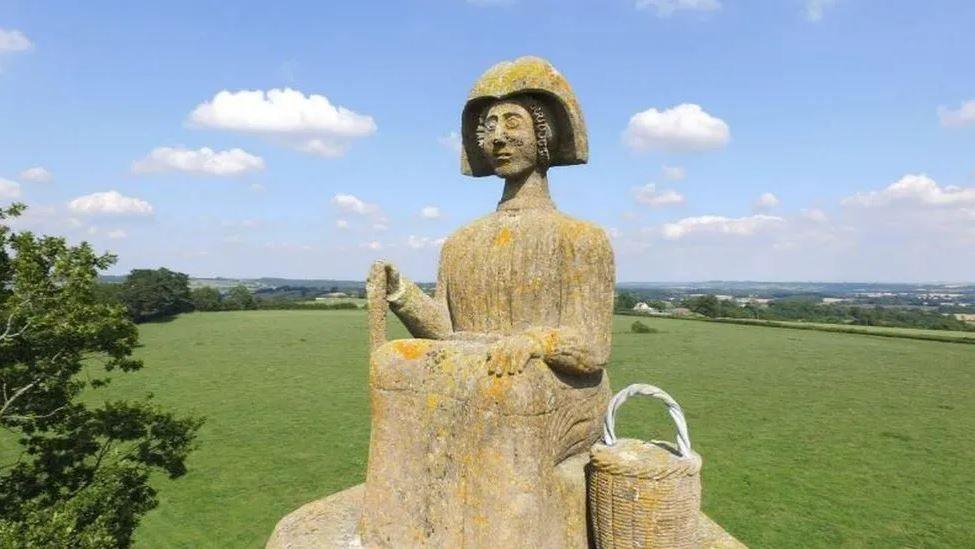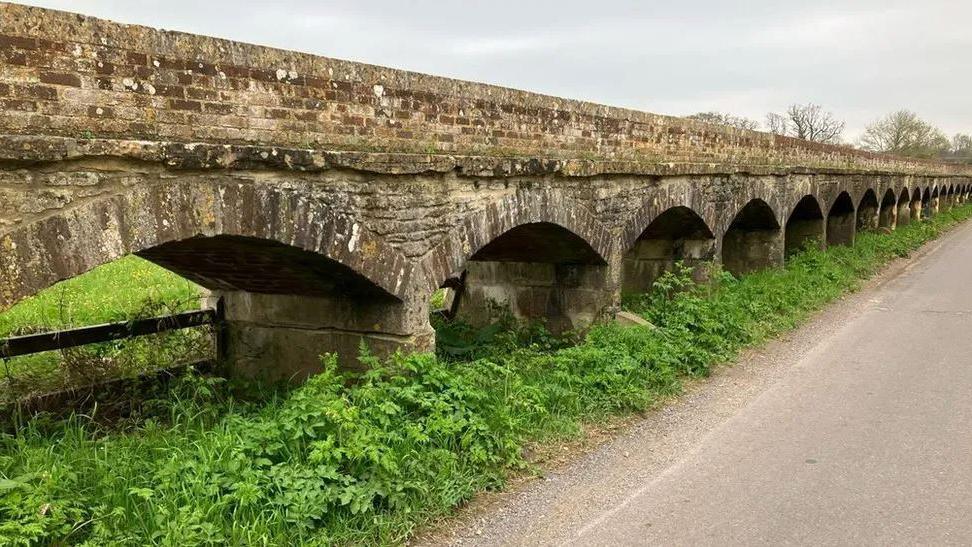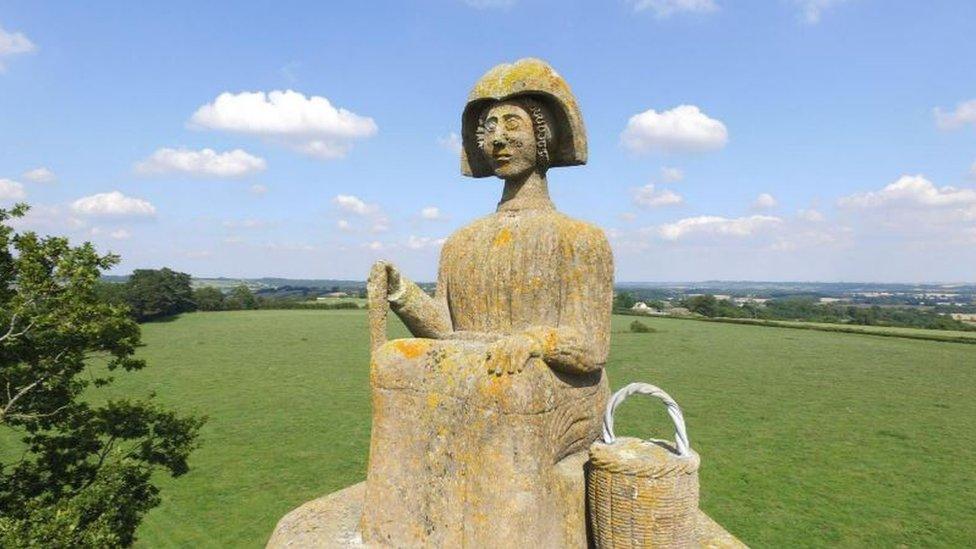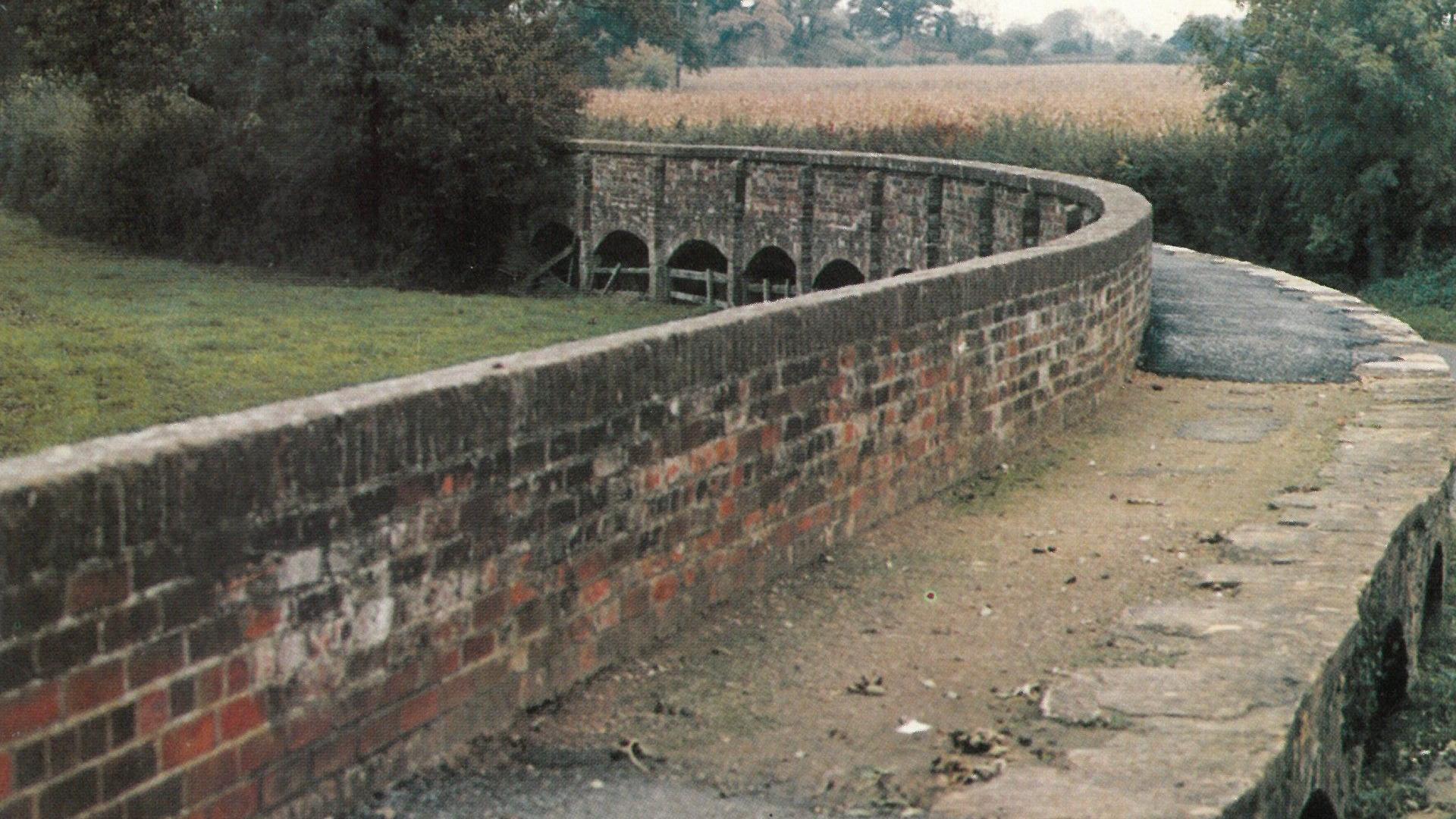Centuries-old mystery around woman solved

New research shows Maud Heath was part of a wealthy dynasty
- Published
The mystery surrounding the identity of a 15th century woman and the legacy she left behind has been solved, researchers say.
Maud Heath lived in the Chippenham area in the 1470s and gifted properties and land in the town, such as the causeway at Langley Burrell.
A statue of her stands at Bremhill and for centuries, various stories and legends have been told about her, as people tried to uncover her true identity.
The most popular story was that she was a poor market woman, but new research has found that she was part of a wealthy dynasty of Bristol shipping merchants.
The causeway, which runs for more than four miles between Chippenham and Bremhill in North Wiltshire, was a gift from Ms Heath in 1474.
No one has ever been sure about who she was or why she gifted the town a causeway.
For years, many believed her to be a poor market woman who, fed up with struggling through the mud of the Avon floodplain on her way into town, left money for a causeway, so that others could walk "dry-shod".
At Bremhill, there is a monument to her, with her shopping basket and wearing a bonnet, sitting atop a tall column.

The Causeway is four and half miles long and stretches from Chippenham to Bremhill
Louise Ryland-Epton and John Chandler, from the University of the West of England, worked alongside The Victoria County History and Chippenham Museum, to find that Ms Heath was part of a wealthy dynasty of Bristol shipping merchants.
Research showed they had country estates in Wiltshire and wanted to maintain an all-weather route and river crossing as an alternative to the overland London Road through Chippenham.
Dr Ryland-Epton presented her findings in a lecture on Monday evening at Chippenham Library and the new information is being added to the exhibition about Maud Heath currently showing at Chippenham Museum.
Maud - or Mathilda Hethe as she called herself - endowed property in Chippenham to the care of trustees, prominent among whom was a Bristol merchant and the city's MP, John Bagot.
Researchers said evidence concludes that Ms Heath was Mr Bagot's elderly aunt.
The causeway, which Ms Heath gifted the town, runs right past the site of the house by the river at Kellaways and would have enabled travellers to leave the Bristol Road and cross the Avon further upstream, then climb up to Bremhill to rejoin the London Road into Calne.
It was the way that Mr Bagot himself went when he had to attend parliament – in one direction – or to see to his Bristol affairs – in the other.
Follow BBC Wiltshire on Facebook, external, X, external and Instagram, external. Send your story ideas to us on email or via WhatsApp on 0800 313 4630.
- Published11 March 2024

- Published27 June 2024
